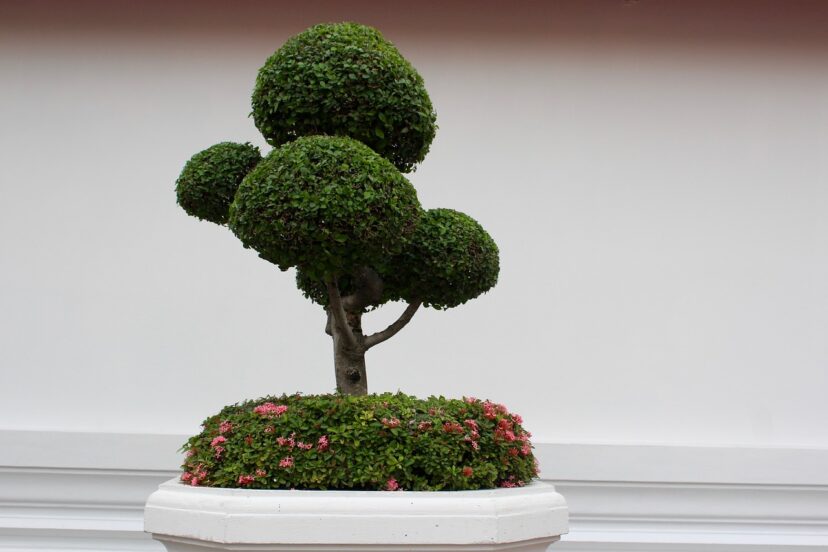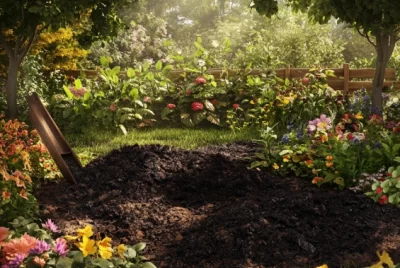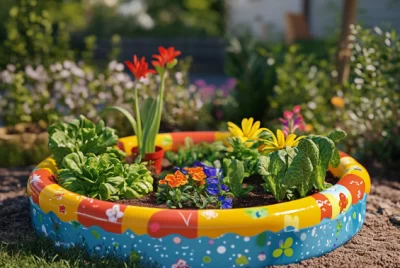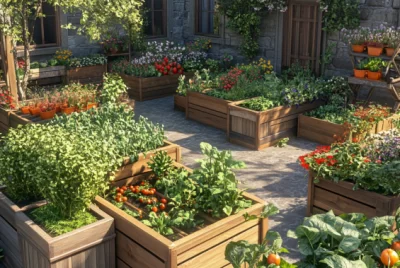Hydroponic Bonsai: A Modern Approach to Ancient Art
Hydroponic bonsai, a unique fusion of traditional bonsai art and modern hydroponic technology, is revolutionizing how we grow and appreciate these miniature trees. Imagine nurturing a bonsai, not in soil, but in water enriched with nutrients. It’s a blend of age-old artistry and contemporary science, opening up new possibilities and challenges.
Understanding Hydroponics and Bonsai
Before diving into the world of hydroponic bonsai, let’s break down the two components: hydroponics and bonsai.
What is Hydroponics?
Hydroponics, at its core, is about growing plants without soil. Instead, plants get their nutrients from a water solution. This method isn’t new; it’s been around for centuries in different forms. What’s exciting is how hydroponics allows us to control the growing environment more precisely than traditional soil-based methods. Plants can grow faster and healthier, as they get exactly what they need when they need it.
The Art of Bonsai
Bonsai, a revered and ancient art form, originated in China over a thousand years ago before gaining immense popularity in Japan. It involves cultivating miniature trees that replicate the shape and style of mature, full-size trees. Bonsai is not just a horticultural activity; it’s a blend of art, philosophy, and a deep understanding of nature.
The Philosophy and Aesthetics
Bonsai is more than just trimming and shaping trees; it’s about capturing the essence of nature in a small pot. The philosophy behind bonsai revolves around harmony, balance, and the beauty of simplicity. Bonsai artists strive to create a tree that represents an idealized version of nature, emphasizing aspects like age, resilience, and the passage of time.
Techniques and Styles
Several techniques are employed to maintain and shape bonsai trees, including pruning, wiring, defoliation, and grafting. These techniques help to control the shape and growth of the tree. There are various recognized styles in bonsai, each with its own aesthetic rules, such as formal upright, informal upright, slanting, cascade, semi-cascade, and more. Each style aims to reflect a different aspect or scene from nature.
Tree Selection and Care
Choosing the right tree species is crucial for bonsai. Species like Juniper, Maple, Pine, and Ficus are popular due to their adaptability and resilience. Caring for a bonsai requires attention to watering, soil composition, fertilization, and positioning for adequate sunlight. Bonsai trees also need repotting every few years to ensure their roots and soil remain healthy.
Cultural Significance
Bonsai has significant cultural importance in countries like Japan and China, where it’s seen as a symbol of harmony, patience, and the beauty of nature. It’s also a meditative practice, offering a unique way for people to connect with nature and express their artistic vision.
Modern Bonsai
Today, bonsai has become a global art form, with enthusiasts and practitioners around the world. Innovations like hydroponic bonsai, where trees are grown without soil, are modern twists on this traditional art, showing its adaptability and evolving nature.
In summary, the art of bonsai is a profound blend of horticultural skill and artistic expression. It invites practitioners to engage deeply with the natural world, creating living art that resonates with the principles of harmony, balance, and beauty.
Merging Hydroponics with Bonsai
Combining hydroponics and bonsai brings together the best of both worlds. Hydroponic bonsai can grow faster, thanks to the efficient nutrient delivery system of hydroponics. Also, without the need for soil, these bonsais can be more portable and less messy.
Benefits of Hydroponic Bonsai
With hydroponic bonsai, you get several benefits:
- Faster Growth: The direct nutrient supply leads to quicker growth.
- Space Efficiency: Soil-less setups mean a more compact growing system.
- Healthier Plants: Reduced risk of soil-borne diseases and pests.
- Control and Precision: Easier to control nutrients and pH levels.
Challenges and Considerations
However, this innovative approach isn’t without challenges. Hydroponic bonsai requires a careful balance of nutrients and water, and monitoring the system is crucial to prevent issues like root rot. Also, understanding the specific needs of your bonsai species is vital, as each plant reacts differently to a hydroponic environment.
Setting Up Your Hydroponic Bonsai System
Creating a hydroponic bonsai setup is an exciting journey. Here’s how you can get started.
Choosing the Right Equipment
You’ll need a few key pieces of equipment:
- Hydroponic Reservoir: This holds the nutrient solution. It can be as simple as a plastic container.
- Water Pump and Air Stones: These ensure your nutrient solution is well-oxygenated.
- Grow Lights (optional): If you don’t have enough natural light, grow lights are essential.
- pH and EC Meters: To regularly check the nutrient solution’s pH and electrical conductivity.
Selecting Your Bonsai Tree
Some bonsai trees adapt better to hydroponic systems. Ficus, Jade, and Chinese Elm are great choices for beginners. They are hardy and adapt well to different environments.
Nutrient Solutions and Water Management
The nutrient solution is the lifeline of your hydroponic bonsai. A balanced, water-soluble fertilizer typically works well. Remember to change the nutrient solution every two weeks and monitor the pH levels, keeping them between 5.5 and 6.5 for optimal growth.
Daily and Long-term Care for Your Hydroponic Bonsai
Hydroponic bonsai care is a daily commitment but incredibly rewarding.
Pruning and Shaping
Pruning and shaping are fundamental aspects of bonsai art, crucial for maintaining the tree’s miniature size and for creating its aesthetic form. This process is both a science, understanding the tree’s biology, and an art, envisioning its ideal shape.
Pruning Techniques
Pruning involves two main types: maintenance pruning and structural pruning.
- Maintenance Pruning: This is regularly performed to maintain and refine the tree’s shape. It involves trimming back new growth to encourage branching and to maintain the desired silhouette. Maintenance pruning is often seasonal, tailored to the tree’s growth patterns.
- Structural Pruning: This is more drastic and done less frequently. It involves removing major branches or roots to change the tree’s basic shape. Structural pruning is typically done during the dormant season and is carefully planned to avoid harming the tree.
Shaping Techniques
Shaping bonsai trees often involves wiring and guiding the tree into the desired shape.
- Wiring: Aluminum or copper wire is wrapped around branches to guide their growth and position. The wire must be monitored and adjusted as the tree grows to prevent cutting into the bark. The duration of wiring varies depending on the tree species and the desired effect.
- Clamping: For thicker branches or trunks, special bonsai clamps can be used to bend and shape them. This is a gradual process, requiring patience and careful monitoring.
Artistic Considerations
When shaping a bonsai, various artistic principles come into play:
- Proportion: The tree’s elements (trunk, branches, leaves) should be in proportion to each other to maintain a natural appearance.
- Balance and Asymmetry: While traditional Western aesthetics might favor symmetry, bonsai often embraces asymmetry for a more natural and dynamic look.
- Depth and Perspective: Branch placement and tree angle are considered to give the tree depth, making it appear as a full-sized tree in nature.
- Theme and Style: The desired style (like informal upright, cascade, windswept, etc.) guides the pruning and shaping process.
Practical Considerations
Pruning and shaping also require understanding the tree’s health and growth patterns:
- Health and Vigor: A tree’s health must be considered before any drastic pruning or shaping. Weak or sick trees might not withstand intense training.
- Growth Patterns: Different species have unique growth habits and responses to pruning. Understanding these patterns is crucial for successful shaping.
Tools and Maintenance
Proper tools like bonsai scissors, cutters, and wire pliers are essential. Keeping tools clean and sharp ensures precise cuts and prevents disease transmission.
Conclusion
Pruning and shaping in bonsai are about more than just aesthetics; they are about understanding and working with the tree’s natural tendencies to create a living work of art. This practice requires patience, vision, and a deep respect for the tree’s life and growth.
Monitoring and Adjusting the Environment
Keep an eye on temperature, light, and humidity. Your bonsai will thrive in a consistent environment. If you notice yellowing leaves or stunted growth, it might be a sign to adjust the light, temperature, or nutrient levels.
Troubleshooting Common Issues
Common issues in hydroponic bonsai include root rot, nutrient deficiencies, and pest infestations. Regularly inspecting your plant and being proactive with adjustments can prevent most problems.
Innovative Hydroponic Bonsai Designs and Displays
Innovative designs and displays in bonsai are about pushing the boundaries of traditional bonsai art to create unique, modern, and sometimes avant-garde presentations. This aspect of bonsai is where creativity and personal expression are at the forefront, blending traditional techniques with contemporary artistic concepts.
Experimenting with Styles and Forms
- Non-Traditional Styles: Moving beyond classic bonsai styles, artists experiment with abstract forms, unusual shapes, and even narrative themes in their bonsai designs.
- Mixed Media: Incorporating elements like rocks, water features, and sculptures can create a more complex and visually striking display. This approach often leads to a fusion of bonsai with other art forms.
Utilizing Technology
- LED Lighting: Innovative lighting can be used to highlight the tree’s features, create dramatic shadows, or even influence the color and growth patterns of the foliage.
- Automated Displays: Motorized turntables, automated watering systems, and climate-controlled display cases are examples of how technology can enhance the presentation and maintenance of bonsai.
Interactive and Dynamic Displays
- Living Art Installations: Bonsai can be part of larger living art installations, where the viewer’s experience changes based on their interaction with the space.
- Seasonal and Thematic Displays: Changing the display elements according to seasons or themes can offer a dynamic and evolving viewing experience.
Fusion with Other Cultures and Art Forms
- Cultural Fusion: Incorporating design elements and aesthetics from different cultures can result in a unique and diverse bonsai presentation.
- Collaborative Works: Collaborating with artists from different disciplines can bring new perspectives and techniques to bonsai displays.
Modern Presentation Platforms
- Digital Exhibitions: Virtual galleries or augmented reality (AR) experiences can make bonsai art accessible to a wider audience, allowing for interactive and educational presentations.
- Social Media and Online Communities: Platforms like Instagram and online forums have enabled bonsai artists to share their innovative designs with a global audience, fostering a community of inspiration and creativity.
Environmental and Conceptual Messages
- Eco-Conscious Displays: Using recycled materials or highlighting environmental themes can make a powerful statement about sustainability and conservation.
- Storytelling through Bonsai: Some artists use their bonsai to tell stories or convey specific concepts, turning their displays into narrative experiences.
Conclusion
Innovative designs and displays in bonsai art are limited only by the artist’s imagination. They represent a dynamic and evolving aspect of bonsai, where tradition meets innovation, and where the ancient art form continues to find new expressions and meanings in the modern world.
The Future of Hydroponic Bonsai
Hydroponic bonsai is more than a contemporary twist on traditional art. It’s a gateway to new possibilities in the world of gardening and artistic expression.
Reflecting on the Future Prospects
The fusion of hydroponics and bonsai symbolizes a growing trend towards innovative, sustainable gardening practices. As technology advances, we can anticipate even more sophisticated systems that make hydroponic bonsai cultivation easier and more accessible to everyone.
Conclusion: Embracing the New Era of Bonsai Cultivation
In this journey through the world of hydroponic bonsai, we’ve explored how this modern approach revitalizes an ancient art. From understanding the basics of hydroponics and bonsai, to diving into the specifics of setting up a hydroponic system, choosing the right tree, and caring for it, we’ve covered the essentials to get you started on this exciting path.
The benefits of hydroponic bonsai, such as faster growth, space efficiency, and healthier plants, are clear. While there are challenges, like mastering the nutrient balance and monitoring the environment, the rewards of nurturing a bonsai tree in this innovative way are immense.
As we look to the future, hydroponic bonsai stands as a symbol of the evolving relationship between nature and technology. It’s a blend of tradition and innovation, opening up new avenues for creativity and sustainability in gardening.
Whether you’re a seasoned bonsai enthusiast or a curious beginner, the world of hydroponic bonsai offers a unique and fulfilling experience. It’s an invitation to experiment, learn, and grow – not just your plants, but also your skills and appreciation for this incredible art form.
Frequently Asked Questions About Hydroponic Bonsai
1. Can any bonsai tree be grown hydroponically?
Not all bonsai trees are ideal for hydroponic growth. Some species, like Ficus, Jade, and Chinese Elm, are more adaptable to hydroponic conditions due to their hardy nature. It’s important to choose a species that can thrive in a soil-less environment.
2. How often should I change the nutrient solution in a hydroponic bonsai system?
It’s recommended to change the nutrient solution every two weeks. This helps prevent nutrient imbalances and maintains the health of the bonsai. Regular monitoring of pH and nutrient levels is also crucial.
3. What are the common challenges in growing a hydroponic bonsai?
Some common challenges include maintaining the right balance of nutrients, preventing root rot, and ensuring the bonsai receives adequate light and the correct temperature. Regular monitoring and adjustments are key to overcoming these challenges.
4. Are hydroponic bonsai systems expensive to set up?
The cost can vary depending on the complexity of the system. A basic hydroponic setup can be quite affordable, especially if you’re DIY-inclined. However, more advanced systems with automated features and specialized equipment can be more costly.
5. Can hydroponic bonsai be grown indoors?
Yes, hydroponic bonsai can be grown indoors. One of the advantages of hydroponic systems is their flexibility in terms of location. If you’re growing bonsai indoors, ensure they have sufficient light, either from a natural source or through grow lights.




